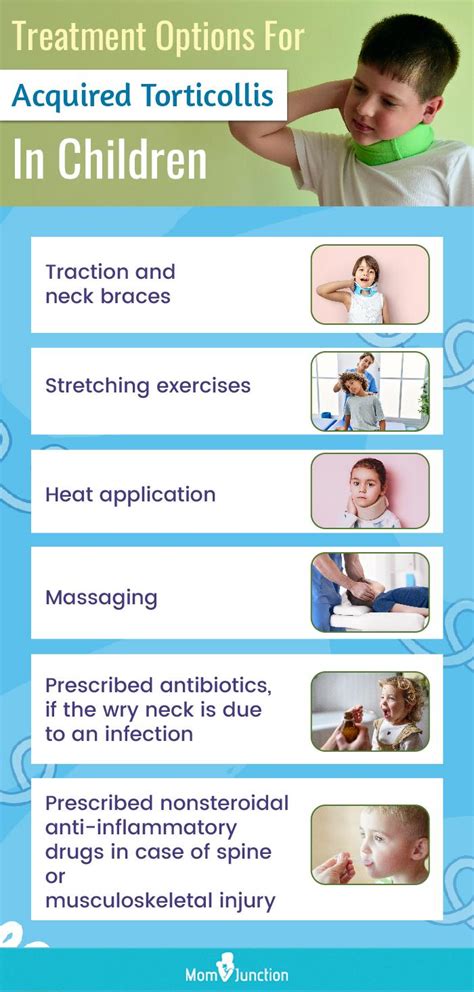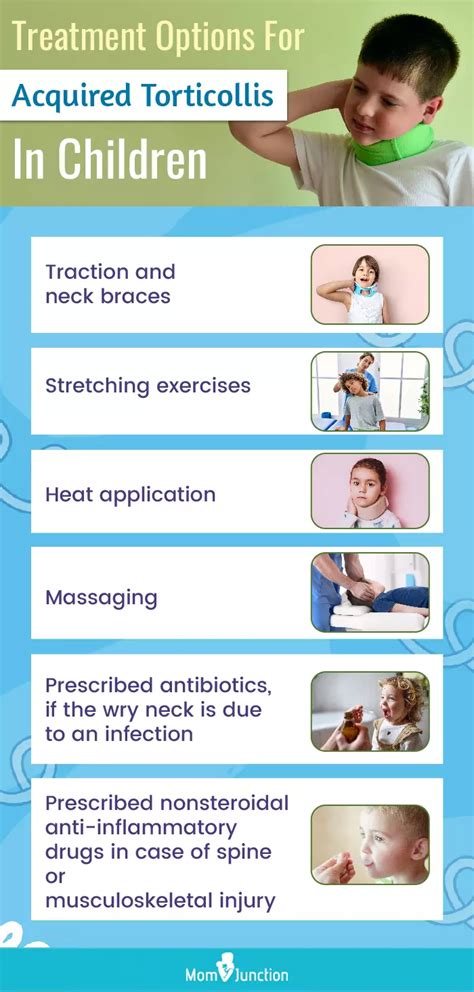Intro
Learn 5 essential tips for soothing torticollis in infants, including exercise, stretching, and positioning techniques to alleviate neck muscle strain and promote healthy development, relieving infant torticollis symptoms and supporting babys physical therapy.
Torticollis, also known as wry neck, is a condition where the head is tilted due to a shortened or tightened muscle in the neck. This condition can be present at birth or develop in the first few weeks of life, affecting infants and causing concern for parents. Understanding the causes, symptoms, and treatment options for torticollis in infants is crucial for providing the best possible care and support. In this article, we will delve into the world of torticollis, exploring its implications, management strategies, and the importance of early intervention.
The importance of addressing torticollis in infants cannot be overstated. If left untreated, it can lead to more severe issues, such as plagiocephaly (flat head syndrome), facial asymmetry, and delayed development. Moreover, the condition can impact the infant's comfort and ability to feed, sleep, and interact with their environment. Parents and caregivers play a vital role in identifying the signs of torticollis and seeking professional help to ensure the infant receives appropriate treatment.
Recognizing the signs of torticollis is the first step towards managing the condition. Parents may notice that their infant consistently tilts their head to one side, has difficulty moving their head from side to side, or shows a preference for looking over one shoulder. In some cases, a small lump or swelling may be visible in the neck muscle. It is essential to consult with a pediatrician or a healthcare professional if any of these symptoms are observed, as early diagnosis and treatment can significantly improve outcomes.
Understanding Torticollis in Infants

Causes and Risk Factors of Torticollis

Diagnosis and Assessment
The diagnosis of torticollis typically involves a physical examination by a healthcare professional, who will assess the infant's head and neck position, range of motion, and muscle tone. In some cases, imaging studies such as X-rays or ultrasound may be ordered to rule out other conditions or to evaluate the extent of the muscle shortening.Treatment Options for Torticollis

Physical Therapy and Stretching Exercises
Physical therapy plays a crucial role in the management of torticollis. A physical therapist can design a customized exercise program to help stretch the affected muscle and improve the infant's range of motion. Parents and caregivers are also taught how to perform these exercises at home, ensuring consistent and ongoing therapy.Positioning Techniques for Torticollis

Prevention Strategies
While not all cases of torticollis can be prevented, there are steps that parents and caregivers can take to reduce the risk. These include avoiding excessive time in car seats or swings, regularly changing the infant's position, and encouraging tummy time when the infant is awake and supervised.Support and Resources for Families

Coping with the Emotional Impact
The emotional impact of having an infant with torticollis should not be underestimated. Parents and caregivers may experience stress, anxiety, and feelings of guilt or helplessness. Seeking support from healthcare professionals, family, and friends can help alleviate these emotions and provide a sense of community and understanding.Long-Term Outcomes and Prognosis

Conclusion and Next Steps
In conclusion, torticollis in infants is a condition that requires prompt attention and management. By understanding the causes, symptoms, and treatment options, parents and caregivers can play an active role in supporting their infant's development and well-being. It is essential to work closely with healthcare professionals to develop a personalized treatment plan and to address any concerns or questions that may arise.What are the common signs of torticollis in infants?
+The common signs of torticollis in infants include a consistent tilting of the head to one side, difficulty moving the head from side to side, and a preference for looking over one shoulder. In some cases, a small lump or swelling may be visible in the neck muscle.
How is torticollis diagnosed in infants?
+Torticollis is typically diagnosed through a physical examination by a healthcare professional, who will assess the infant's head and neck position, range of motion, and muscle tone. In some cases, imaging studies such as X-rays or ultrasound may be ordered to rule out other conditions or to evaluate the extent of the muscle shortening.
What are the treatment options for torticollis in infants?
+Treatment for torticollis in infants often involves a combination of physical therapy, stretching exercises, and positioning techniques. The goal of these interventions is to stretch the tightened muscle, improve range of motion, and promote even development. In severe cases, surgical intervention may be necessary to lengthen the affected muscle.
We invite you to share your thoughts, experiences, and questions about torticollis in infants. Your input can help others who are navigating similar challenges and provide valuable insights for healthcare professionals. By working together, we can promote better understanding, support, and outcomes for infants with torticollis and their families.
